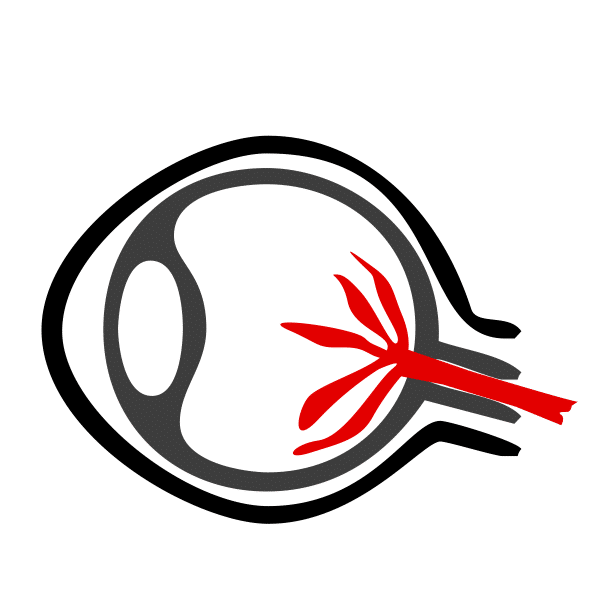
Similar to a heart attack, the eye can be effected by circulatory insufficiencies.
The retina has one major artery and one major vein. The vein is called the central retinal vein and the artery, the central retinal artery. The blood vessels of the retina are very fine and vulnerable to blockage, which can profoundly affect vision. The arteries and veins can both become blocked.
Central Retinal Vein Occlusion (CRVO) is a blockage of this vein that causes the vein to leak blood and excess fluid into the retina. This fluid often collects in the area of the retina responsible for central vision called the macula. When the macula is affected, central vision will become blurry. It is more common in patients with high blood pressure, arteriosclerosis, diabetes, and glaucoma than it is in other people. The second eye will develop vein occlusion in 6-17% of cases.
Symptoms of CRVO are a sudden, painless vision loss in one eye that can become worse over several hours or days. It is important to determine the cause of the blockage through a medical evaluation.
There is no treatment available for CRVO but there are treatments for the complications related to CRVO. Injectable medications and steroids can be used to treat macular edema. Laser treatment called panretinal photocoagulation is used to prevent neovascular glaucoma.
Central Retinal Artery Occlusion (CRAO) is a blockage of the artery caused by arteriosclerosis, small emboli from cardiac arhythmias, temporal arteritis, and many other causes. The central vision can sometimes be maintained if there is an anomalous cilio-retinal artery, otherwise there is profound sudden loss of vision which is often unreversible unless treated within a short period of time. There is no definitive treatment however the following can be tried: ocular massage, anterior chamber paracentesis, and inhalation therapy of a mixture of 5% carbon dioxide and 95% oxygen.